The difference between Foundry Bronze metal and cold cast Bronze Resin
Whether you are thinking about making a purchase, or about commissioning a bespoke sculpture, it is helpful to know the difference between Foundry Bronze metal and cold cast Bronze Resin in advance. Both materials can be good choices for different reasons.
Foundry Bronze metal is a copper and tin alloy that is shaped using the traditional method of bronze casting, using the lost wax process – used by sculptors in ancient Greece. The bronze is melted at extremely high temperatures and then poured into a ceramic mould.
The lost wax method of casting is a highly skilled, complex, time-consuming and labour intensive process. Not least because the bronze metal will shrink by up to 5% in the casting. The skill required in the casting, combined with the innate value of the bronze (which is made from copper and tin), gives rise to the comparatively high price of a bronze sculpture.
Learn more about the casting process for Foundry Bronze metal here…
Foundry Bronze sculpture lasts indefinitely and as the premier and most authentic sculptural material is often considered to be an investment. It is much harder to repair than cold cast bronze if it is damaged, but damage is much less likely due to its strength and durability.
We often recommend a commissioner who comes to us for a bespoke animal sculpture commission choose foundry bronze. The comparative price between Foundry Bronze metal and Bronze Resin is smaller for a commission than it is with a purchase. The commissioner is still paying for the artist’s time and the mouldmaking, whichever material they choose. We certainly always recommend Foundry Bronze for anyone commissioning a public work, or any developer intending to place an artwork outside in a common space. In these instances, it is far more likely that users of the space may unintentionally or intentionally interact with the sculpture in a way that might cause damage. And while Bronze Resin is strong in large sized sculpture, Foundry Bronze metal is far more resistant to knocks and climbing.
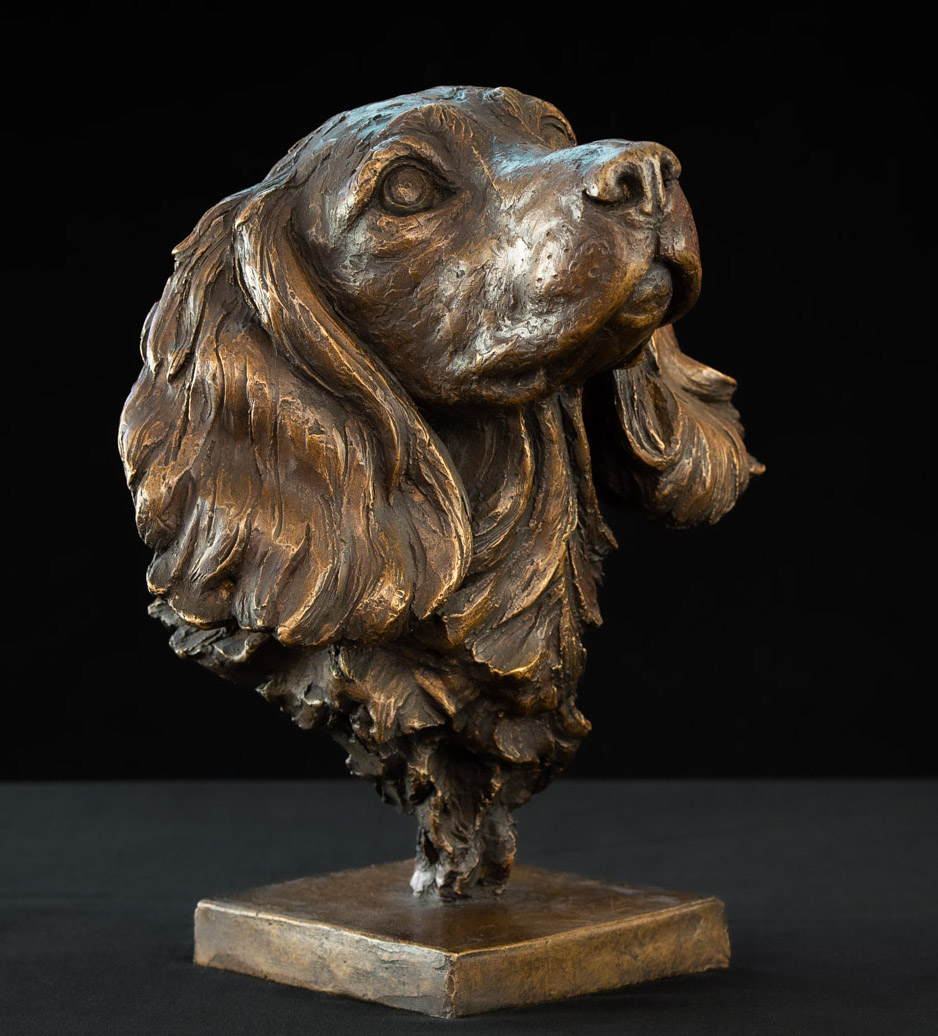
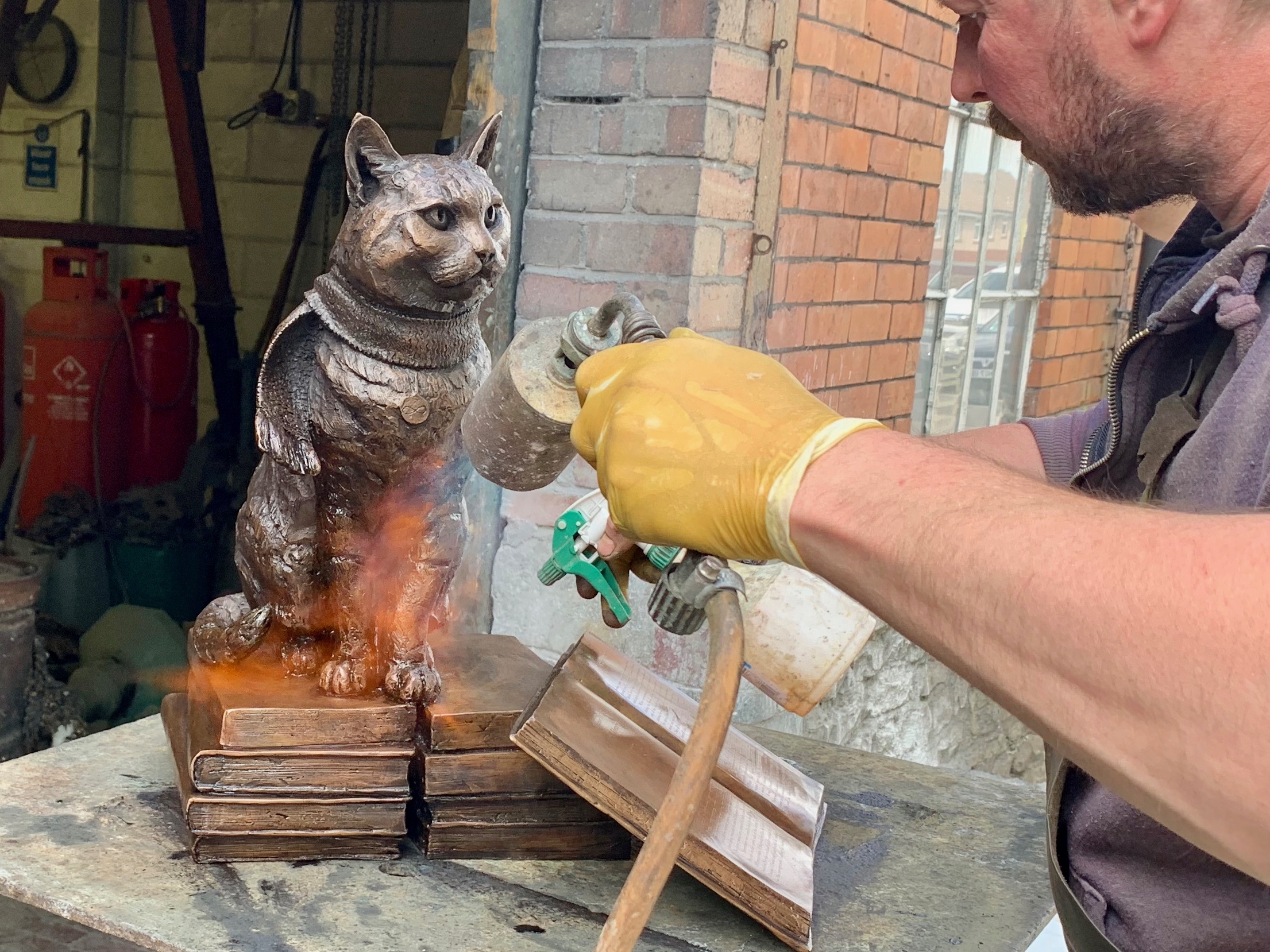
Bronze Resin sculpture also known as “cold cast bronze” or bonded bronze, is made of real bronze powder, mixed with polyester, epoxy or another resin and poured into a rubber reusable mould. This is backed up with very strong fiberglass and resin. Because real bronze powder is used over its surface, cold cast bronze can be colored or patinated (a chemical reaction with the metals in bronze) to look very similar to Foundry Bronze.
Other coloured powders, and not just bronze, may be mixed into the polyester or painted onto the surface to enable the resin to achieve the appearance of different materials, such as iron, copper or stone. Casting a cold cast sculpture is faster and less expensive than casting bronze. It is also much lighter and is still relatively strong, as it can be reinforced with an internal steel structure.
Learn more about the casting process for cold cast Bronze Resin here…
Cold cast bronze resin can last outside for over 35 years, and most last between 50 to 100 years. Depending on the shape some cracking may occur over time. If water pools constantly in one area, cracking may appear if water sits and then freezes. Cracking is also more likely along the seam lines. Cold cast Bronze Resin is relatively inexpensive to repair, but make sure you keep the contact details of the artist, as they may be able to help arrange a repair for you at their casters, or with a caster in your own country. (For us this is a not for profit aftercare service, and we arrange repairs of our sculptures at cost).
Indoors bronze resin treated with care can last indefinitely. It is more fragile than foundry bronze and knocking or dropping can break or crack vulnerable parts of the sculpture. However, it is also quite easily repaired and is a fantastic bronze substitute. It’s generally very durable and much more affordable, normally approximately half the cost of Foundry Bronze.
Cold cast Bronze Resin is usually much lighter in weight than Foundry Bronze metal is. But it can be filled, to create a more substantial or wind resistant sculpture for the garden. At larger sizes, it is usually preferred not to fill the sculpture, as a hollow sculpture is easier to move and can be made equally wind resistant with internal stainless steel reinforcing and either a sub-frame that gets buried in the ground, or steel fixings into a hard surface.
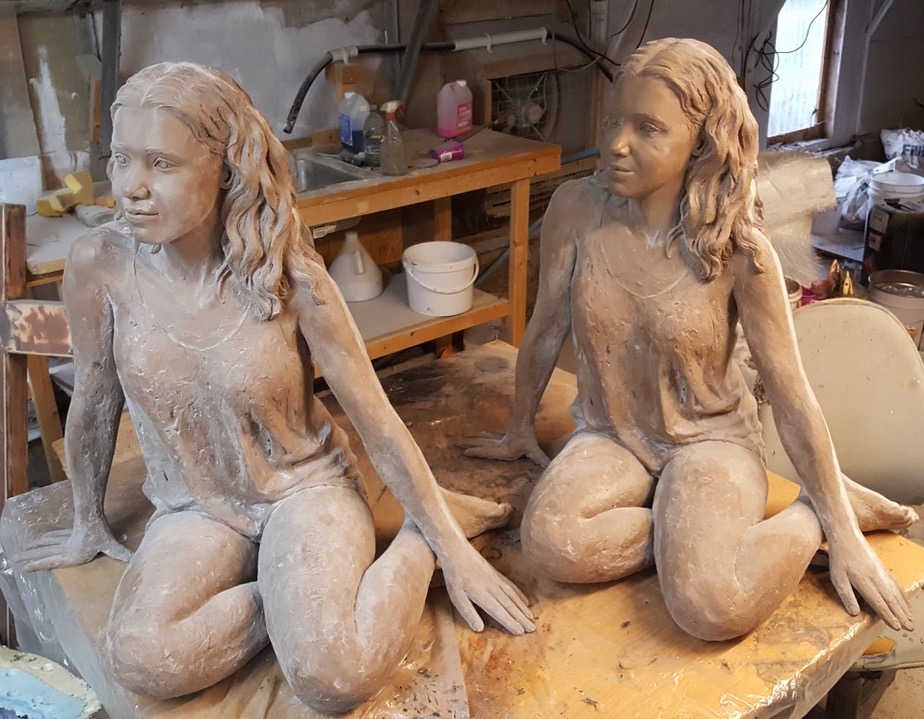
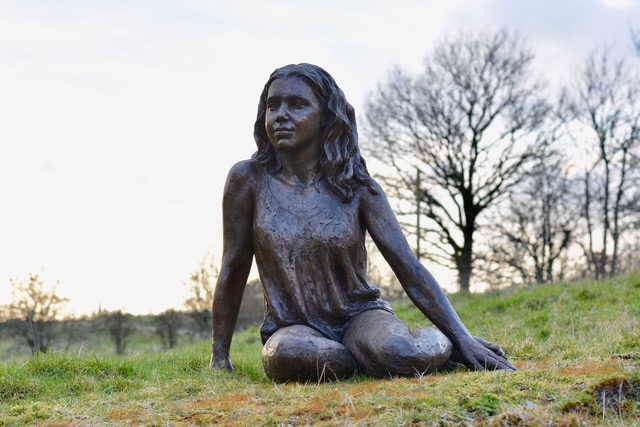
You can tell whether a sculpture is Foundry Bronze by:
– the sound,
– and the colour,
– but not always by temperature,
– and not always by the weight.
The best way to tell the difference between Foundry Bronze metal and cold cast Bronze Resin is with sound. Foundry Bronze metal sounds metallic when you tap it with your wedding ring. Bronze Resin sounds more like plastic when you tap it with your ring finger.
Foundry Bronze metal sculptures are normally heavier in the hand than cold cast Bronze Resin sculpture would be. Weight is not a reliable way to tell the difference because cold cast Bronze Resin can be heavier than a Foundry Bronze metal statue, because large bronze resin sculpture will sometimes be filled with a heavy filler to give it substance in the garden and protection against the elements. We fill some of our medium outdoor Bronze Resin sculptures with recycled marble dust.
It is not true that Foundry Bronze metal is colder than cold cast Bronze Resin. Actually, bronze conducts heat, so if the air around it is cold it will feel colder to the touch than Bronze Resin, but outdoors in direct sunshine , Foundry Bronze metal will feel incredibly hot. So using temperature to judge if you are looking at Foundry Bronze metal can be deceptive.
Telling the difference between the two materials by eye can often be challenging. Foundry Bronze metal usually has a deeper colour and a greater lustre, particularly in any gold coloured highlights. However, Bronze Resin can look very similar, as with the Standing Retriever sculpture on the left, and it is getting closer all the time! The difference in colour is clearest when you are dealing with a smoother sculpture, with a golder patina, as with the Leaping Dolphin sculpture below.
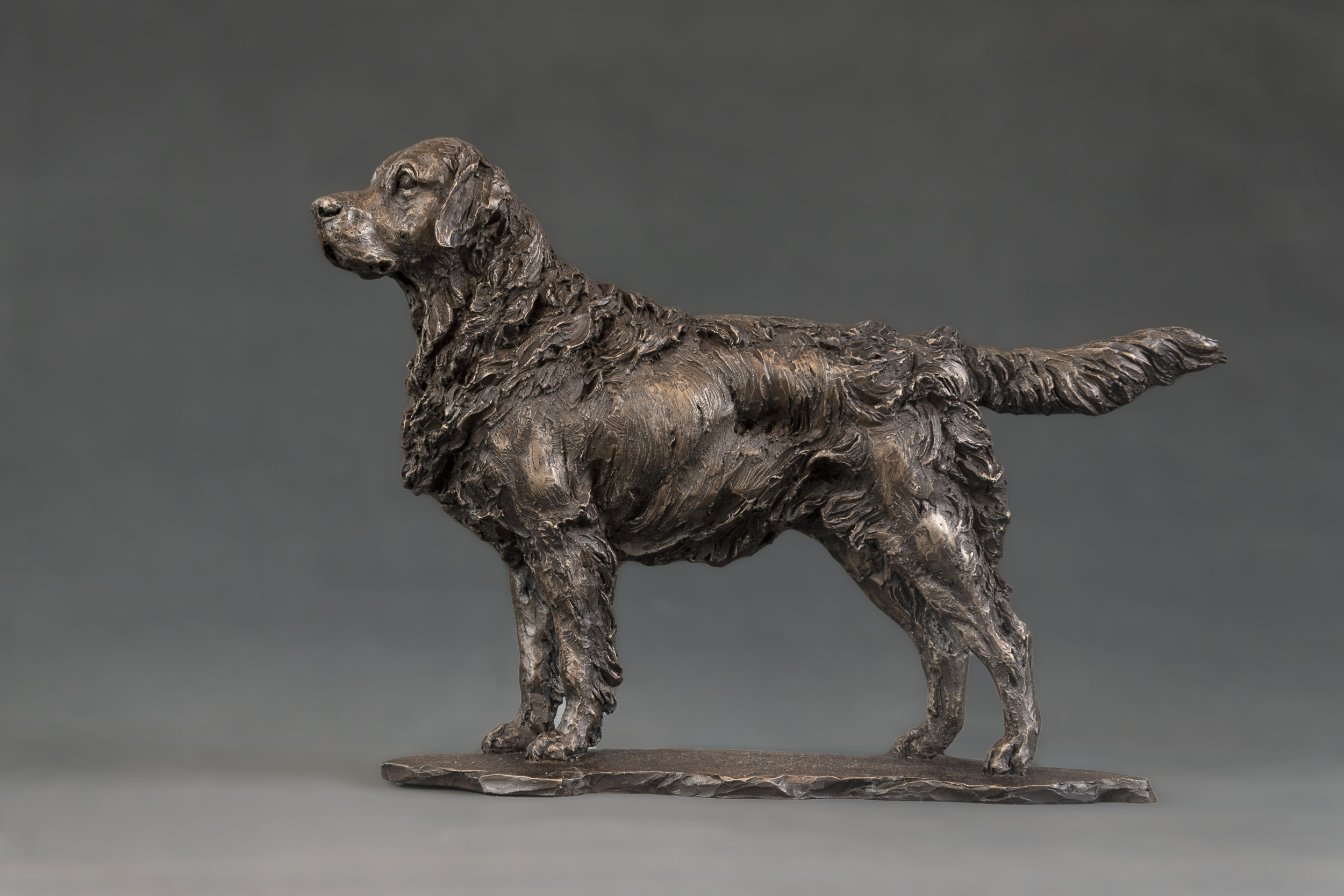
Bronze Resin
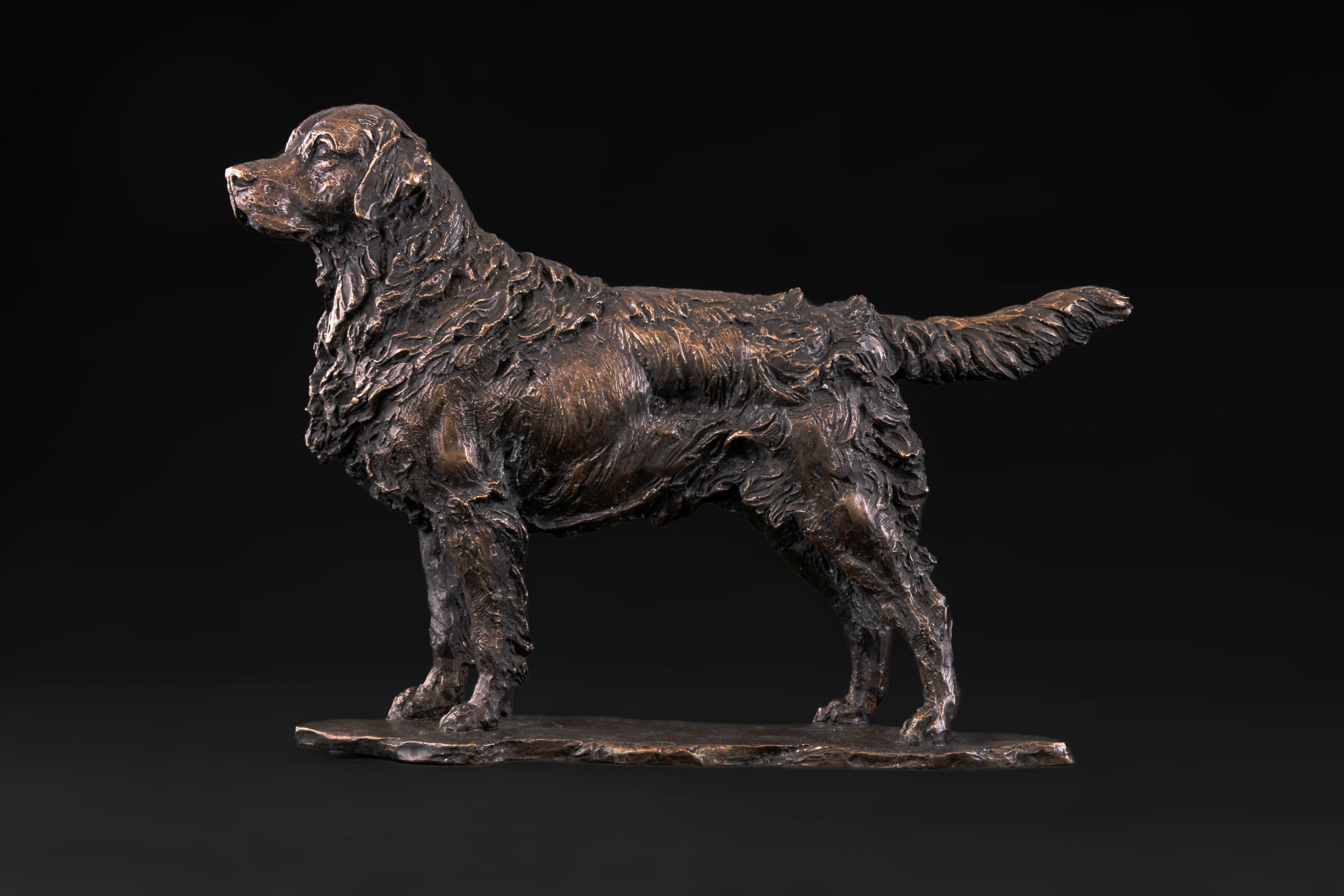
Foundry Bronze
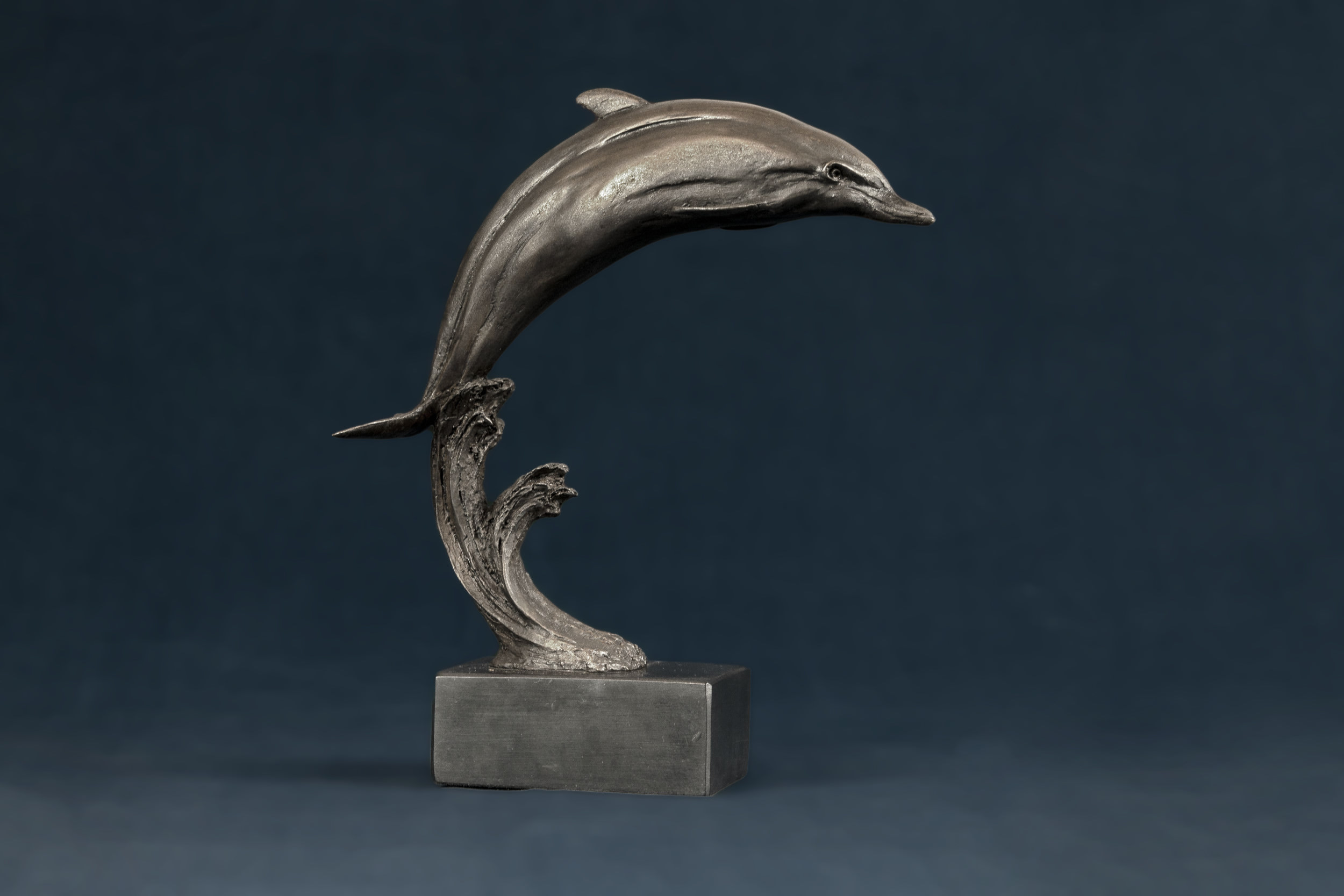
Bronze Resin
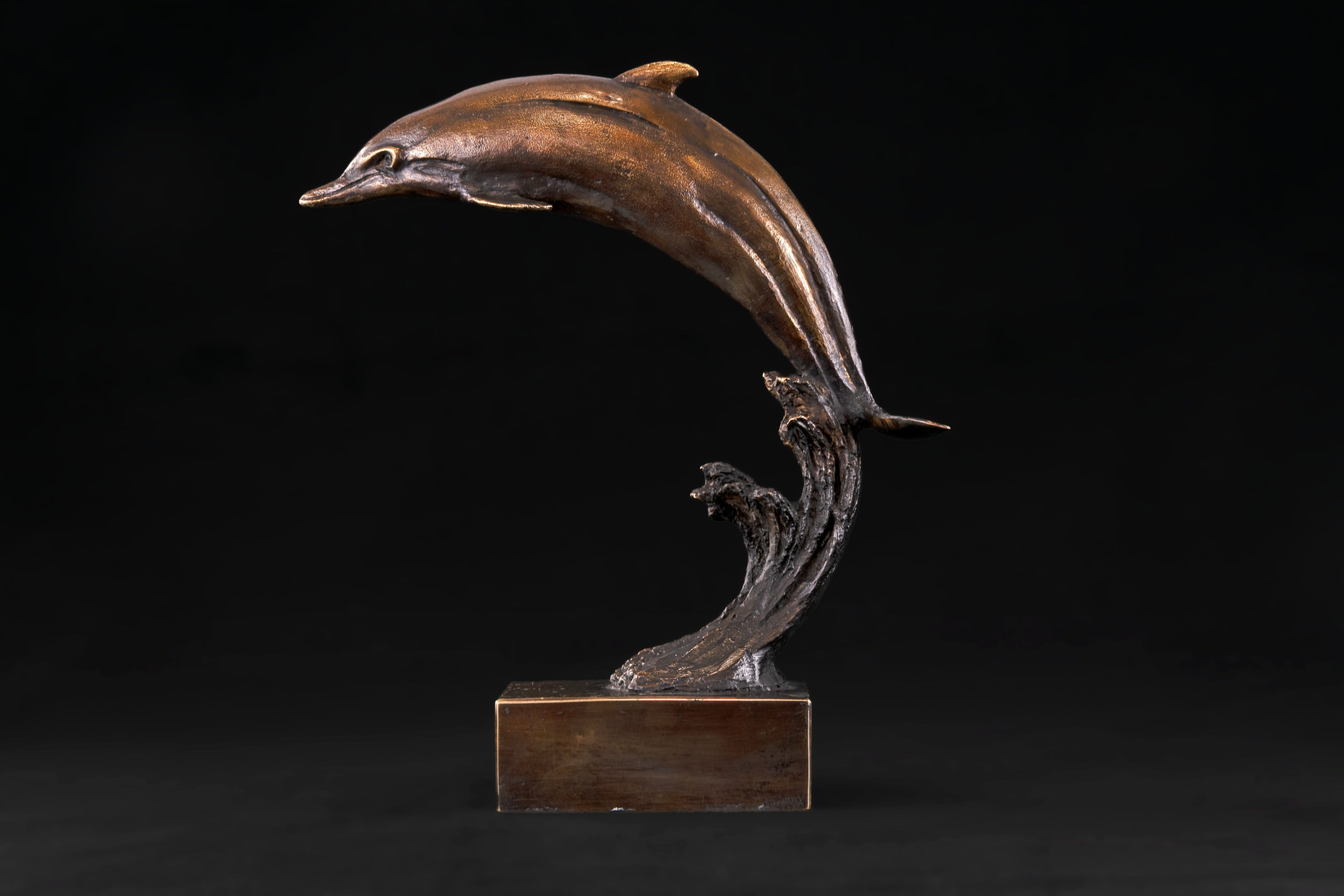
Foundry Bronze

Follow The Artist
Keep up to date with Tanya's latest work!